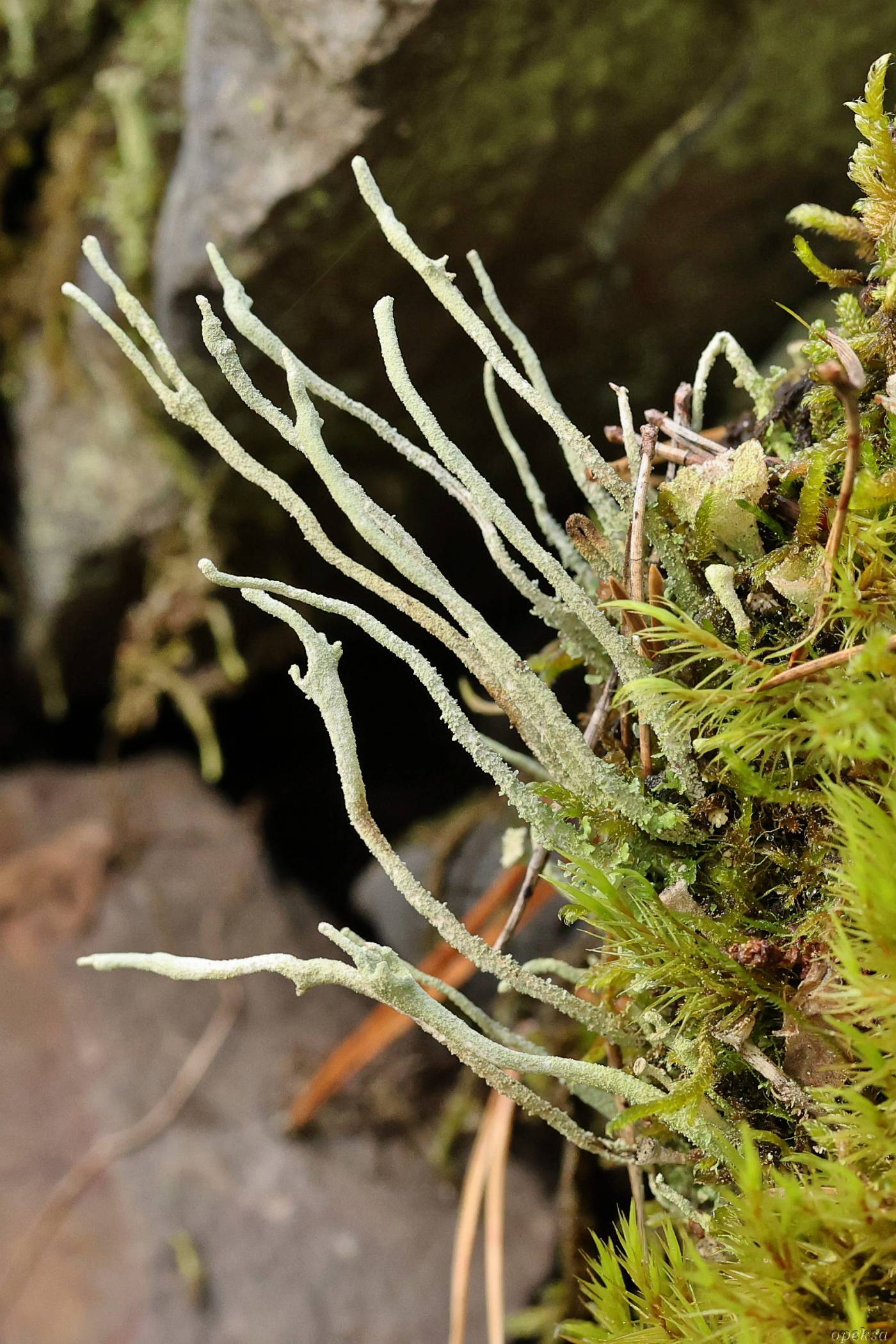This species has unbranched to slightly branched, narrowly scyphose podetia with sorediate surface. It is very similar to C. rei, which can be reliably distinguished by the presence of substances of the homosekikaic acid complex giving a weak UV+ white reaction in high concentrations. Cladonia subulata constantly produces fumarprotocetraric acid (Pd+ red), which is sometimes absent from C. rei. Verification by TLC is often necessary. Cladonia subulata is a very variable lichen. Certain forms may be confused with C. coniocraea, C. fimbriata or even C. chlorophaea. Interestingly, it is the type species of the genus Cladonia.
The lichen is acidophilic, growing on bare soil, humus or decaying wood. It occurs in both natural and anthropogenic habitats from lowlands to mountains. It is abundant all over Europe and the Czech Republic. Majority of the Czech records has been included in the morphologically defined C. subulata agg. in this atlas because of its difficult identification.
taxonomic classification:Ascomycota → Lecanoromycetes → Lecanorales → Cladoniaceae → Cladonia
Red List (Liška & Palice 2010):LC – least concern
Occurrence in the Czech Republic
All records: 151, confirmed 80. One click on a selected square displays particular record(s), including their source(s).
